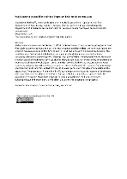Asaia bacteria in sand flies and their impact on Leishmania transmission

Autor
Stejskalová, Markéta
Varotto-Boccazzi, Ilaria
Epis, Sara
Ivovic, Vladimir
Adam, Katja
Department of Biodiversity, Faculty of Mathematics, Natural Sciences and Information Technologies, University of Primorska and Society of Conservation Biologists
Datum vydání
2024Publikováno v
ISOPS XI: International Symposium on Phlebotomine Sandflies, 9-13 September 2024, Portorož, Slovenia : Programme and Abstract BookNakladatel / Místo vydání
University of Primorska Press (Koper, Slovenia)ISBN / ISSN
ISBN: 978-961-293-362-3Metadata
Zobrazit celý záznamKolekce
Abstrakt
Midgut microbiome was demonstrated to affect the transmission of vector-borne pathogens. In sand flies, Asaia bacteria was found as a part diet and midgut microbiome. Here, we have investigated the effect of two Asaia species on the development of Leishmania major in Phlebotomus duboscqi. The sand flies were first infected with bacteria via sugar meal and then membrane-fed on blood containing Leishmania promasgotes. Following this superinfecon, the development of Leishmania infecon was examined. Parcularly, we studied changes in localizaon and intensity of infecon and examined Leishmania morphological forms on midgut smears. Both tested bacteria species, Asaia siamensis, and Asaia krungthepensis, colonized the intesne of female Ph. Duboscqi for up to 8 days aer infecon and were transmied vercally to the next generaon through contaminaon of the egg surface. The presence of Asaia within Ph. Duboscqi negavely affects the intensity of Leishmania late-stage infecons. In addion to the wild type, we tested a strain of Asaia engineered for the expression of a protein of Wolbachia (WSP). This strain of Asaia also readily survives in Ph. duboscqi midgut and experiments on its effect on Leishmania infecon are in progress.
Klíčová slova
Phlebotomus, Asaia, superinfection, microbiome
Trvalý odkaz
https://hdl.handle.net/20.500.14178/2795Licence
Licence pro užití plného textu výsledku: Creative Commons Uveďte původ 4.0 International




